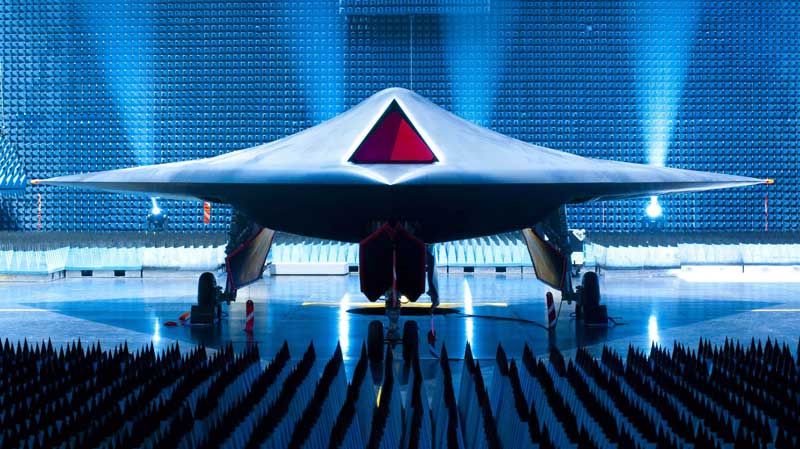
Called Taranis, after the Celtic god of thunder, the unmanned drone is capable of carrying out reconnaissance missions in other continents and has a long-range strike ability with a cache of bombs and missiles available.
And just like those "Hunter-Killer" robot jets in the Terminator series, the Taranis has been designed to use artificial intelligence that could potentially allow the drone to identify and attack enemy targets on its own.
The size of a small plane, and similar in shape to the American B2 stealth bomber, the Taranis is "the first of its kind" according to the U.K. military and defence contractor BAE systems.
The prototype, unveiled to journalists on Monday by the U.K. Ministry of Defence under tight security, cost about $225 million and took some three years to design and build.
"It could then carry out intelligence, surveillance and reconnaissance activity ... It's a combat aircraft with weapons so it could strike with precision weapons," Squadron Leader Bruno Wood, the Ministry of Defence spokesman for the Taranis project, told The Globe and Mail earlier this week.
However, Wood said the decision to open fire would always be made by a human operator, and not left to the machine - a feature that differentiates it from Cameron's futuristic killers.
"That's something you would never erase the human element from," Wood said.
Worries of a 'Skynet' future
The use of automated weapons is a growing trend on the battlefield that has some experts sounding the alarm.
Noel Sharkey, a professor of artificial intelligence and robotics at the University of Sheffield, says in an article for The Guardian that the use of autonomous robots "is dangerous new territory for warfare, yet there are no new ethical codes or guidelines in place."
"Human soldiers have legal protocols such as the Geneva conventions to guide them. Autonomous robots are only covered by the laws of armed conflict that deal with standard weapons," he wrote.
Sharkey worries that robots will have a harder time than humans distinguishing civilians from enemy combatants on the field of battle.
The U.S. military already uses thousands of robots and unmanned drones in Afghanistan and Iraq.
And Congress has made it a goal to have one-third of its military's ground vehicles unmanned by 2015.
The use of combat drones is only expected to increase as technology becomes cheaper and more effective and Western nations more loath to place soldiers in harm's way.
The maiden voyage for the Taranis is set for 2011. The timeline for the robot rebellion of their human overlords, remains unknown.



Reader Comments
to our Newsletter